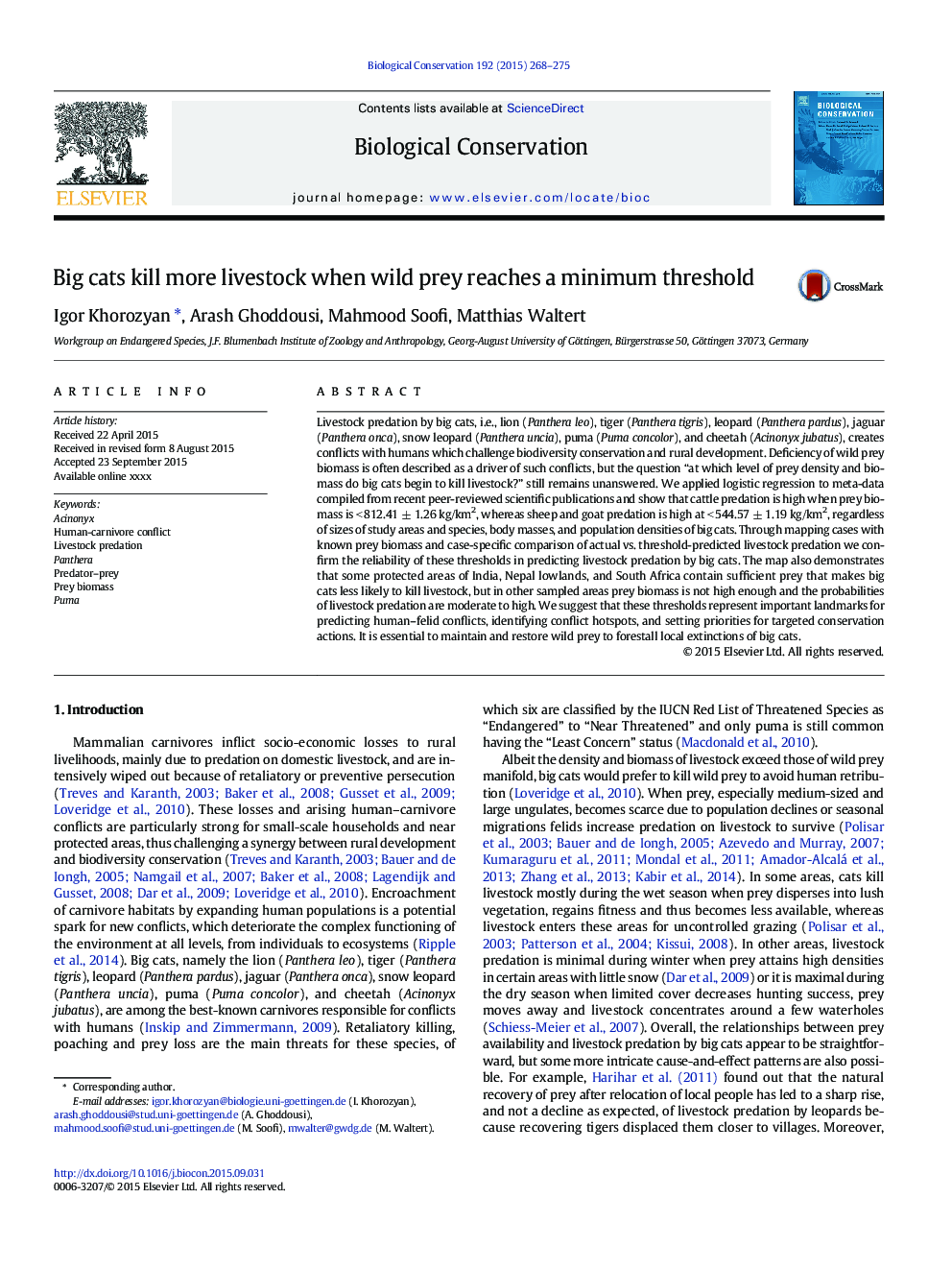| کد مقاله | کد نشریه | سال انتشار | مقاله انگلیسی | نسخه تمام متن |
|---|---|---|---|---|
| 6298585 | 1617909 | 2015 | 8 صفحه PDF | دانلود رایگان |
عنوان انگلیسی مقاله ISI
Big cats kill more livestock when wild prey reaches a minimum threshold
ترجمه فارسی عنوان
گربه های بزرگ حیوانات بیشتری را می کشند هنگامی که شکار وحشی به حداقل آستانه می رسد
دانلود مقاله + سفارش ترجمه
دانلود مقاله ISI انگلیسی
رایگان برای ایرانیان
کلمات کلیدی
موضوعات مرتبط
علوم زیستی و بیوفناوری
علوم کشاورزی و بیولوژیک
بوم شناسی، تکامل، رفتار و سامانه شناسی
چکیده انگلیسی
Livestock predation by big cats, i.e., lion (Panthera leo), tiger (Panthera tigris), leopard (Panthera pardus), jaguar (Panthera onca), snow leopard (Panthera uncia), puma (Puma concolor), and cheetah (Acinonyx jubatus), creates conflicts with humans which challenge biodiversity conservation and rural development. Deficiency of wild prey biomass is often described as a driver of such conflicts, but the question “at which level of prey density and biomass do big cats begin to kill livestock?” still remains unanswered. We applied logistic regression to meta-data compiled from recent peer-reviewed scientific publications and show that cattle predation is high when prey biomass is < 812.41 ± 1.26 kg/km2, whereas sheep and goat predation is high at < 544.57 ± 1.19 kg/km2, regardless of sizes of study areas and species, body masses, and population densities of big cats. Through mapping cases with known prey biomass and case-specific comparison of actual vs. threshold-predicted livestock predation we confirm the reliability of these thresholds in predicting livestock predation by big cats. The map also demonstrates that some protected areas of India, Nepal lowlands, and South Africa contain sufficient prey that makes big cats less likely to kill livestock, but in other sampled areas prey biomass is not high enough and the probabilities of livestock predation are moderate to high. We suggest that these thresholds represent important landmarks for predicting human-felid conflicts, identifying conflict hotspots, and setting priorities for targeted conservation actions. It is essential to maintain and restore wild prey to forestall local extinctions of big cats.
ناشر
Database: Elsevier - ScienceDirect (ساینس دایرکت)
Journal: Biological Conservation - Volume 192, December 2015, Pages 268-275
Journal: Biological Conservation - Volume 192, December 2015, Pages 268-275
نویسندگان
Igor Khorozyan, Arash Ghoddousi, Mahmood Soofi, Matthias Waltert,
